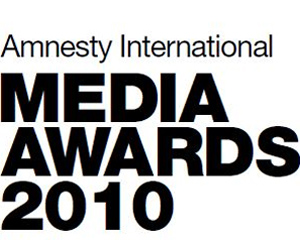First-hand accounts and Twitter updates from journalists on the ground in Thailand this week have given an insight into the level of violence faced by citizens and journalists reporting ongoing clashes between the red-shirt anti-government protestors and the Thai military.
According to the Committee to Protect Journalists (CPJ), at least eight journalists have been shot, two fatally, while covering the unrest in Bangkok. Freelance Italian photojournalist Fabio Polenghi was killed on Wednesday – another casualty following the death of Reuters cameraman Hiro Muramoto on 10 April.
Those journalists reported to have been injured include Dutch freelancer Michael Maas; the Independent’s Andrew Buncombe, and freelance Canadian writer and photographer, Chandler Vandergrift.
“Covering civil unrest in Thailand is always dangerous, but for months, neither side in the political turmoil has been willing to address ways of allowing journalists to do their jobs without fear of being killed or injured,” says Bob Dietz, CPJ’s Asia programme coordinator, on the group’s website.
Buncombe, who was shot in the leg while covering violence at a Buddhist temple, tweeted eyewitness reports from the scene providing a harrowing yet fascinating narrative of his experience, which he has also covered in a piece for the Independent:
The injured were removed, with priority given to those most badly hurt.
The first to leave was the man shot in the lower back. Next was a man shot in the leg. As he was lifted on the stretcher and carried towards the ambulances, he moaned and cried. He pressed his palms together as if to say a prayer, perhaps both for himself and his country.
A man who had been shot in the thigh and I were taken out in the final two ambulances. That man’s name was Narongsak Singmae, he was 49 and from the north-east of the country. As he lay waiting to be taken away to hospital, he said: “I cannot believe they are shooting in a temple.”
Tweets and images from fellow journalist Mark MacKinnon, East Asia correspondent for Canada’s national newspaper, the Globe and Mail, (who managed to sneak a cold beer into @andrewbuncombe while he was in hospital according to this tweet) have been pulled into a transcript by the Globe and Mail, creating a vivid account of the Thai government’s crackdown on protestors.
The Vancouver Sun has a moving account of photojournalist Nelson Rand who was hit by three bullets while covering the violence but survived; and another Canadian journalist, Vandergrift, who was seriously injured in clashes between Red Shirt protestors and Thai soldiers. A producer with CBC News, Cedric Monteiro, describes the moment he realised Vandergrift was injured:
There was more yelling down the road, from more soldiers running with stretchers. As the first one went by I recognized Vandergrift on it. He was motionless, his head bandaged, his shoulder bleeding. Someone was shouting at him: “Chandler stay awake.”
According to reports, he was struck by shrapnel from a grenade that also tore through the arm of a Thai soldier. Tonight Vandergrift lies in hospital in serious condition, fighting for his life. The sadness of the moment lies even heavier because I knew him. He is among four journalists who were injured today. Another was killed – an Italian photographer.
As I try to fathom why so many scribes race with such intensity and abandon to cover conflict, I’m reminded by what my journalism professor once said: “There is no story in the world worth dying for.”
